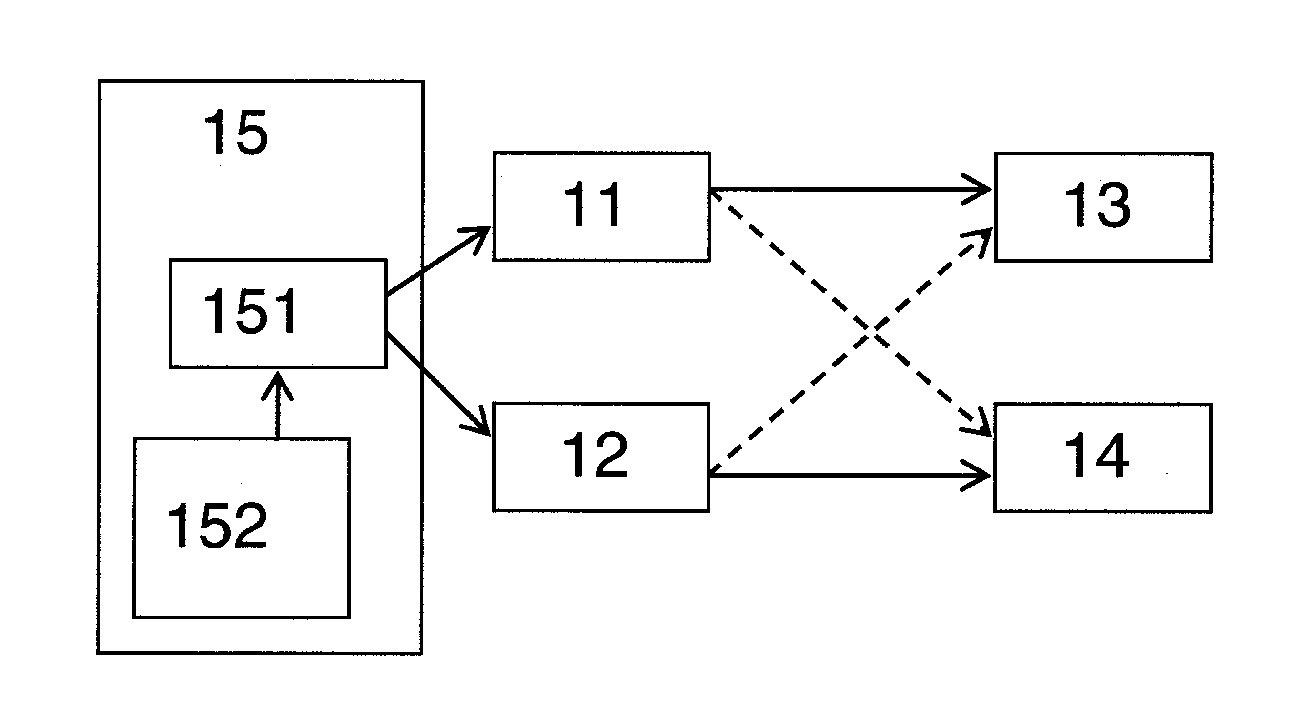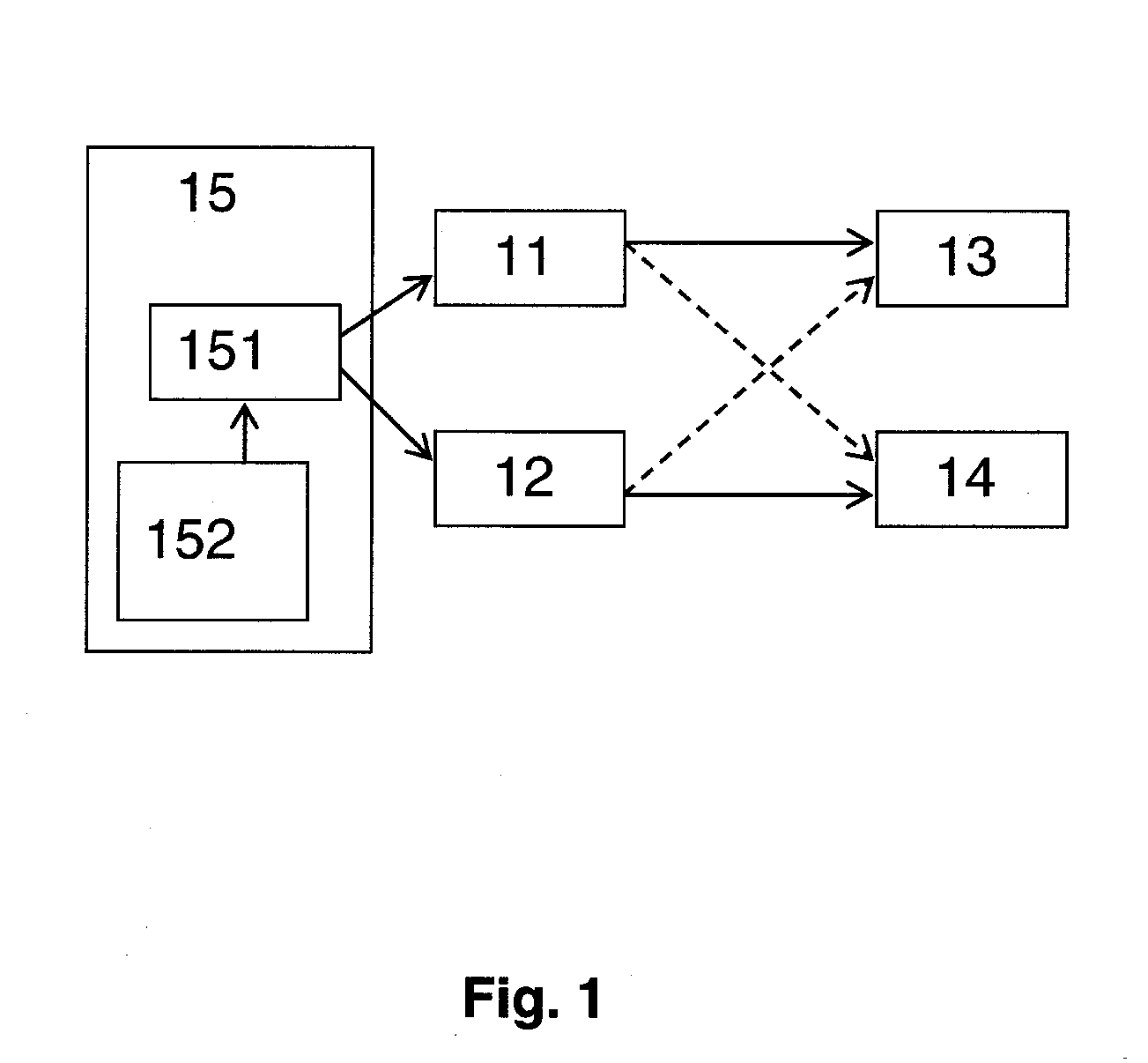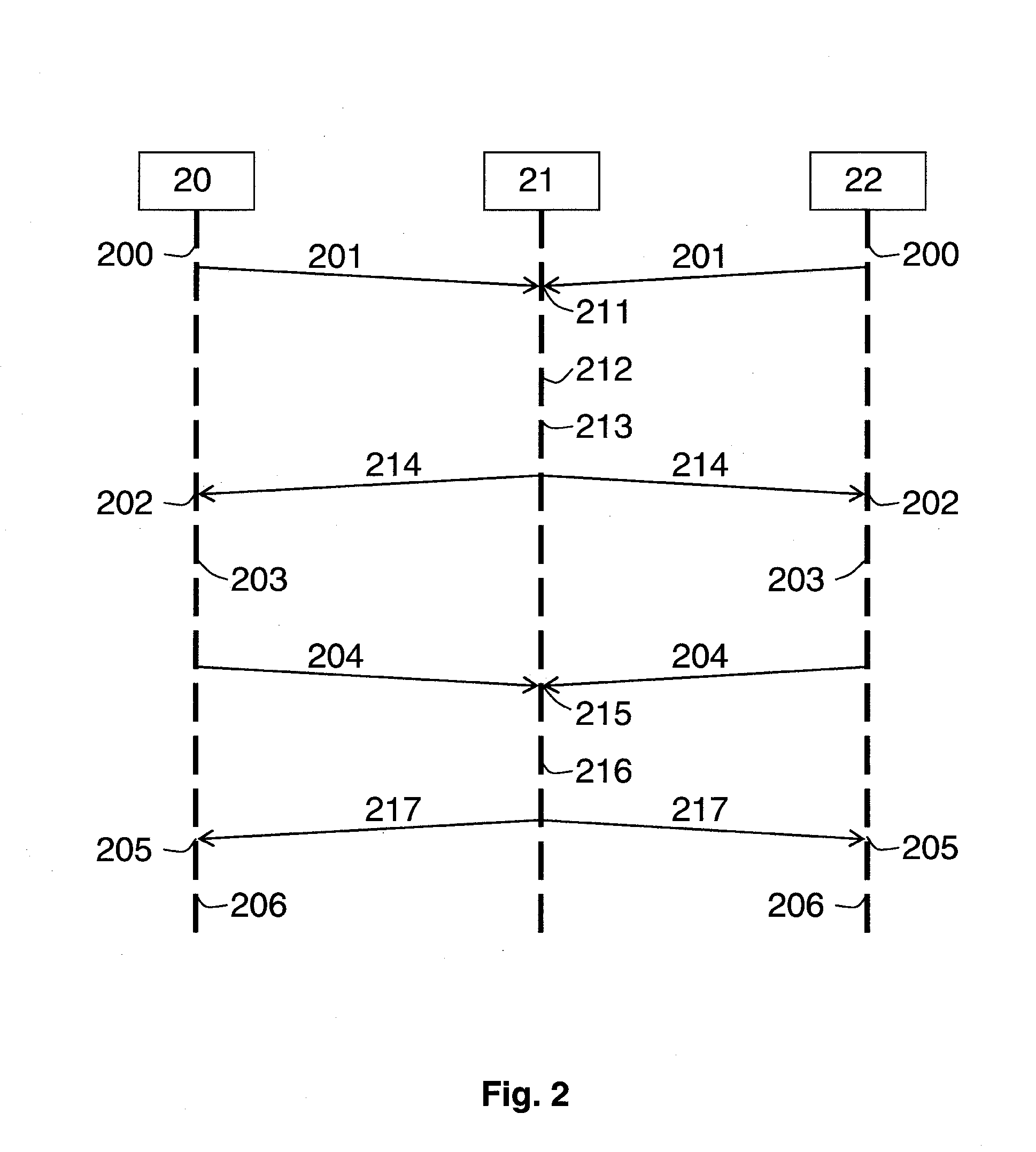Method for Generating Cooperation Areas in Communications Networks and Corresponding Network Nodes
a technology of communication network and cooperation area, applied in the direction of site diversity, wireless communication, assess restriction, etc., can solve the problems of limiting the achievable performance gain, affecting the efficiency of communication network, so as to achieve efficient transmission, reduce signalling and measurement overhead, and avoid interference. , the effect of reducing the overhead
- Summary
- Abstract
- Description
- Claims
- Application Information
AI Technical Summary
Benefits of technology
Problems solved by technology
Method used
Image
Examples
Embodiment Construction
[0060]In FIG. 1 a cooperation area in a communications network is shown. According to the embodiment of FIG. 1, the cooperation area comprises two base stations 11, 12 and two mobile nodes 13, 14. Here, communication in the cooperation area is established by use of a cooperative antenna system. Use of cooperative antenna systems in communications networks is common. According to the present invention, several types of known cooperative antenna systems can be exploited.
[0061]According to the present embodiment, a central unit 15 of the cooperation area performs common signal pre-coding, which is basically a matrix multiplication of all data signals with a pre-coding matrix 151. In case of zero forcing, the pre-coding matrix will be a pseudo inverse matrix of the overall channel matrix. According to the present embodiment, a codebook based pre-coding is used exemplary. Here, it has to be noted that the present invention is not restricted to codebook based pre-coding only.
[0062]Accordi...
PUM
 Login to View More
Login to View More Abstract
Description
Claims
Application Information
 Login to View More
Login to View More - R&D
- Intellectual Property
- Life Sciences
- Materials
- Tech Scout
- Unparalleled Data Quality
- Higher Quality Content
- 60% Fewer Hallucinations
Browse by: Latest US Patents, China's latest patents, Technical Efficacy Thesaurus, Application Domain, Technology Topic, Popular Technical Reports.
© 2025 PatSnap. All rights reserved.Legal|Privacy policy|Modern Slavery Act Transparency Statement|Sitemap|About US| Contact US: help@patsnap.com



